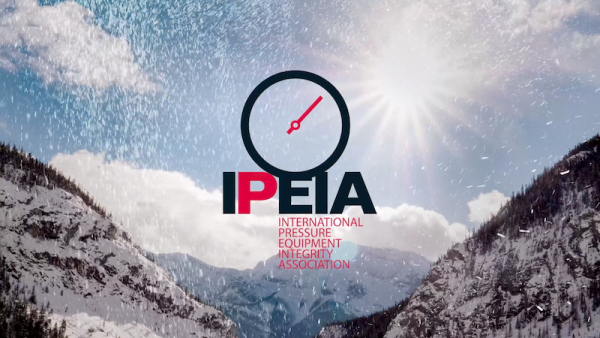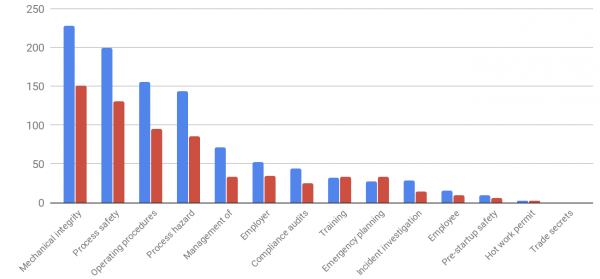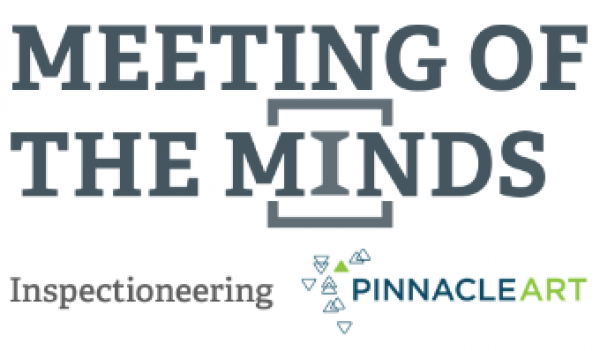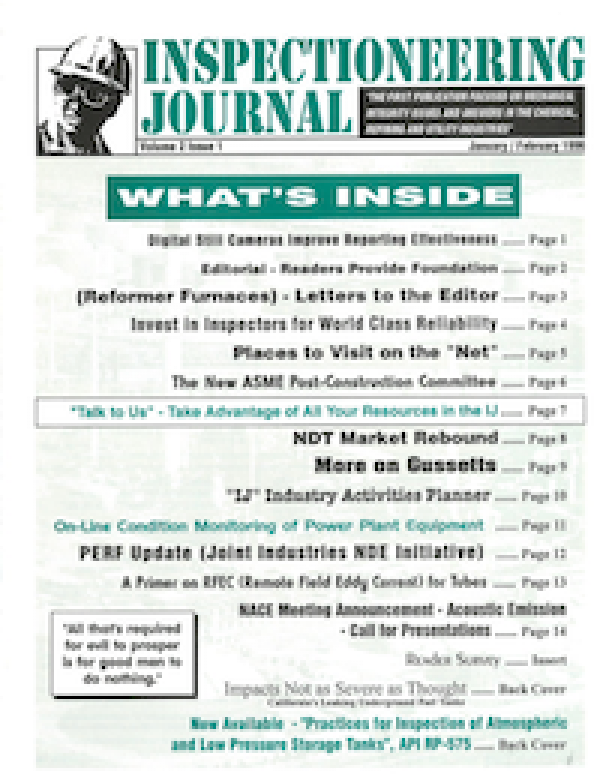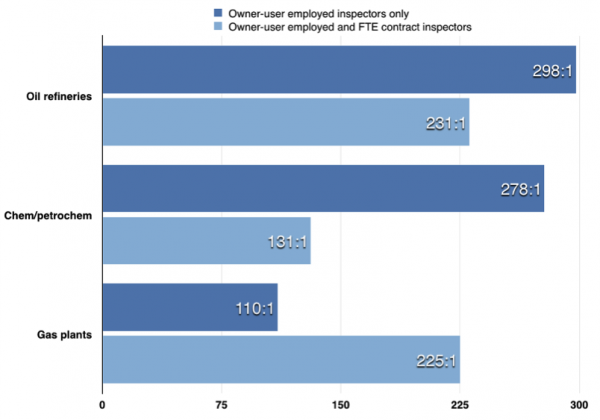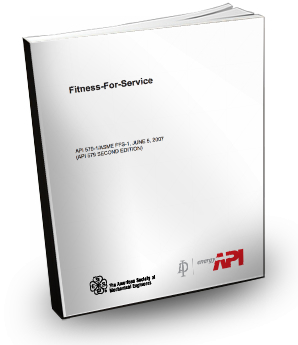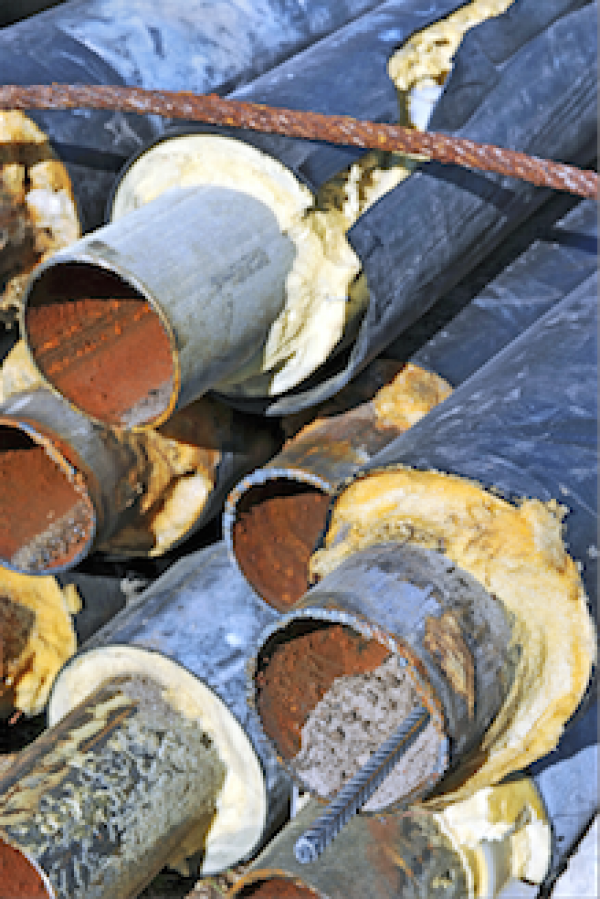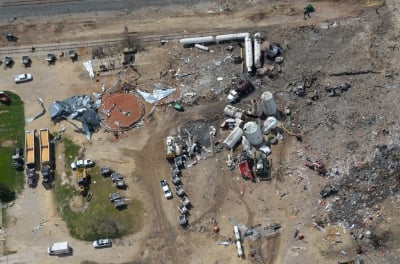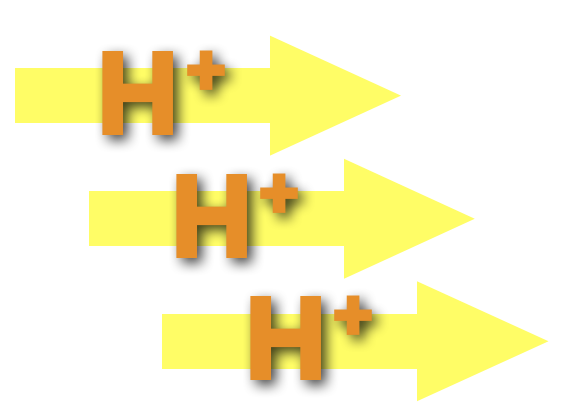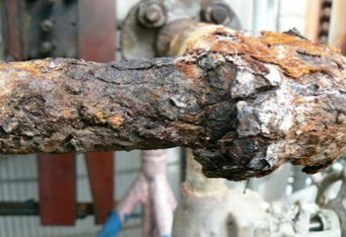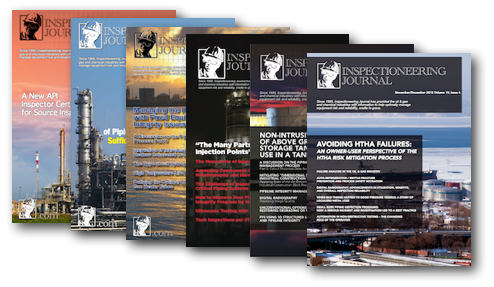Nick Schmoyer: About the Author
Vice President and Technical Director, Inspectioneering

Nick Schmoyer is Vice President and Technical Director of Inspectioneering. Nick came to the organization in 2011 after a successful career in commercial insurance. During his time with one of the largest insurers, Nick was responsible for managing commercial policies valued in excess of $200 million. Nick holds a Bachelor of Business Administration with a focus in Finance and Economics from The University of Oklahoma.
Is this you? Please help us keep this page up-to-date by occasionally submitting your updated information.
Published Articles
The next annual International Pressure Equipment Integrity Association Conference and Exhibition is right around the corner, so we thought we’d have a quick chat with members of the Executive Committee about the upcoming conference.
After a five-year hiatus, Inspectioneering announces the return of its benchmarking surveys, additional ways to receive CPD credit hours, and a new initiative with API to deliver training programs and educational materials.
We regularly poll the Inspectioneering audience to help us determine how to best allocate our editorial efforts. In this survey, we asked readers to provide their greatest professional challenges, preferred ways to receive information, and the like.
Inspectioneering had the opportunity to catch up with David Clark of Lloyd’s Register after his keynote presentation at the 2020 International Pressure Equipment Integrity Association (IPEIA) conference in Banff, Canada.
Inspectioneering and PinnacleART recently hosted a roundtable discussion for a select group of mechanical integrity experts to discuss strategies for managing corrosion under insulation and corrosion under pipe supports, a.k.a. touch point corrosion.
The U.S. Department of Labor provides a vast amount of raw data related to OSHA activities (inspections, violations, etc.) through their website. What follows is a quick summary of 2016-2017 OSHA violation data pulled directly from the DOL.
Inspectioneering and PinnacleART hosted a roundtable discussion for a select group of mechanical integrity and reliability experts to explore whether or not operators are realizing actual benefits from implementing RBI at their facilities.
How do you make decisions in regards to your mechanical integrity program? There are many voices out there offering advice; could be a co-worker, could be a trusted associate from another company or facility. But don't underestimate the power of cold, hard facts. Inspectioneering's Benchmarking Surveys and Reports can arm you with the data you need to make better informed decisions when it comes to your mechanical integrity program.
Over 20 years ago, in the January/February 1996 issue of Inspectioneering Journal, we invited readers to participate in a brief survey concerning industry and non-industry topics. We recently unearthed the results to this survey and I thought our readers might get a kick out of some of the questions and responses.
We recently invited asset integrity professionals to rate various mechanical integrity performance characteristics in their facilities. Here are the results.
Toward the end of last year, Inspectioneering conducted a survey with the goal of answering the following question: "How many pressure vessels do facilities have compared to the number of inspectors responsible for them?" The answer to this question is an important metric for developing proper plant inspection staffing numbers. Inspection managers, among other facility decision-makers, may benefit by knowing this ratio relative to what exists at their own site.
Nondestructive Testing (NDT) makes up the majority of testing performed in our industry. There many different types of nondestructive testing techniques. Each method has its own advantages and disadvantages; each can detect different types of flaws. Some are simple to perform, others are difficult. Some are used on several different types of equipment, others are more restricted.
These are interesting times when it comes to inspection technology in the process industries. With the advent of big data, mobile and wireless technology, and various other technological advances, we thought it would be a good idea to provide a recap on some of the new technologies that have been covered in Inspectioneering Journal.
One of Inspectioneering's most popular topics is Fitness for Service (FFS). This blog post will provide you with some highlights from some of our most popular articles related to FFS. It's only a small sample of what we offer, but it should still prove useful to readers both old and new.
Over recent years large strides have been made in application, development, and utilization of Digital Detector Arrays (DDAs) in field radiography environments. The use of industrial digital radiography shows benefits of significantly reduced exposure times versus traditional film and computed radiography techniques.
Corrosion Under Insulation (CUI) is an insidious damage mechanism that, despite being incredibly well-known and understood, still makes up an inordinately large percentage of global maintenance expenditures. CUI has been extensively researched and studied and because of that, there exist several good resources on it, and we at Inspectioneering are dedicated to bringing those resources to you.
For over 20 years OSHA's process safety management (PSM) standard worked to guarantee safe and healthy workplaces in industries that use hazardous chemicals. For most of that time the standard had remained largely unmodified. This all changed last...
One of the more insidious problems within the industry is the issue of atomic hydrogen dissolving into steel equipment. This can happen to some steel components under certain circumstances and can cause weld failure, or what is known as “hydrogen cracking.” These cracks can occur during the welding process itself, but sometimes they can occur up to 48 hours later.
I've crunched some numbers and have come up with the three most popular damage mechanisms, based on the activity of our readers, that Inspectioneering publishes information on.
I frequently find myself overwhelmed by the sheer volume of new software solutions, technologies, networking platforms, mobile applications, etc. being made available to the industry.
Occasionally, we like to provide recaps of articles written by our authors on a specific subject related to asset integrity management. This week, we're highlighting four of our most popular articles written about storage tank inspection.
Those of you who have followed Inspectioneering for any amount of time understand that we publish a vast amount of content dealing with risk based inspection (RBI) methodology. Ever since it was first developed and used in the process industries, RBI has become more and more popular with facilities. One of our authors has gone as far as to call it a major result of the third maintenance revolution.
In 2013 Inspectioneering published content covering a wide array of topics, from risk-based inspection, to advanced nondestructive testing methods, to pipeline integrity management systems. Last year, we published more content than any year prior; we expect the same trend to continue into 2014.
Many of you are already aware of some of the changes that have occurred within API this year. For those of you who are not, here’s a quick summary.
Starting in March 2014, the American Petroleum Institute Inspector Certification Program (API ICP) will change its examination delivery method from pen-and-paper based testing (PBT) to computer-based testing (CBT). This change is a welcome push toward a more streamlined, efficient method of handling ICP examinations.
